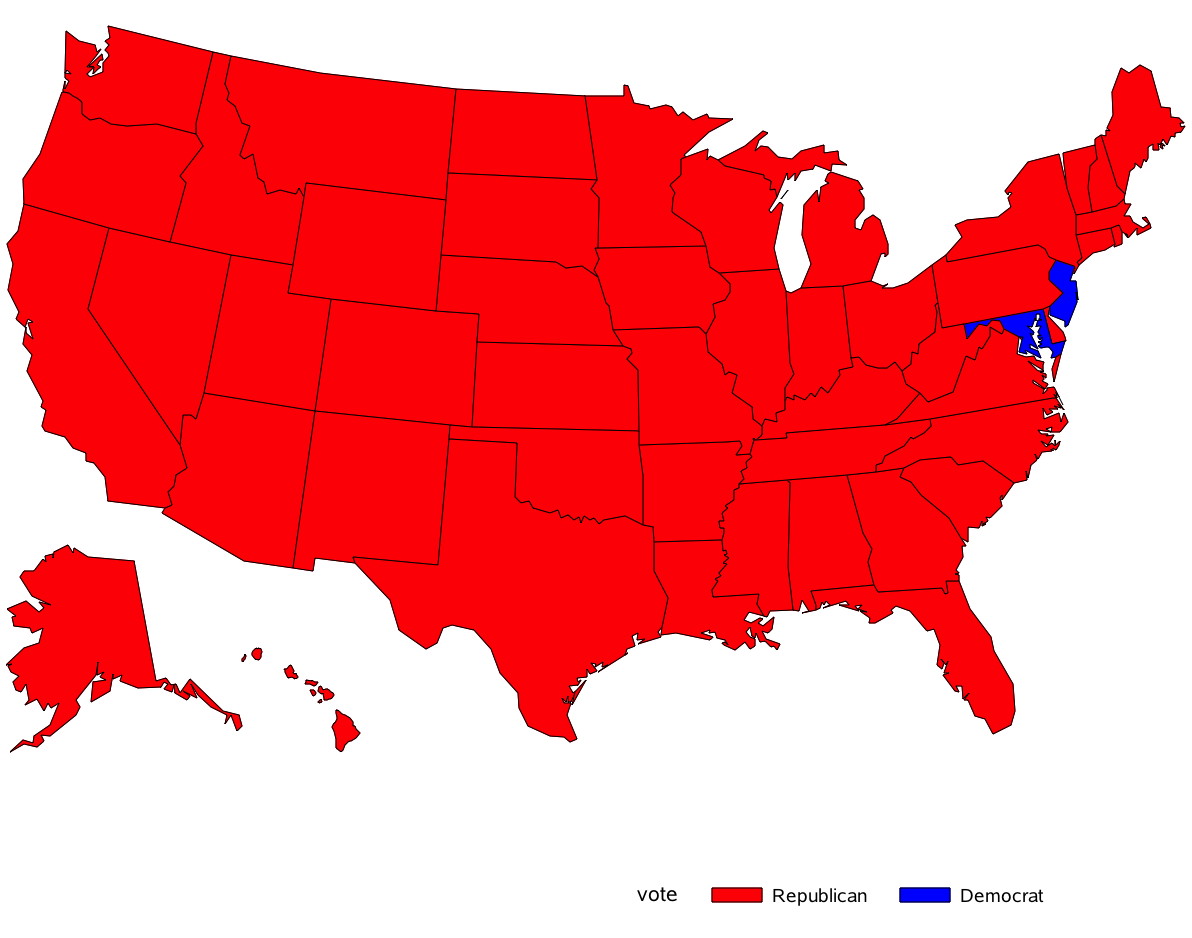Statistics Guru Predicts Republican Sweep! With Proc GMAP
Esteemed statistics guru, Dr. Nathaniel Golden has some sobering news for Democrats. His latest models predict a Republican blow out. As can be seen by the map below, the Republican front-runner has tapped into the mood of resentment in the country’s non-elites. When the dust has settled, only the two highest earning states in the country will remain in the blue column, Maryland and New Jersey (seriously, New Jersey). Code used in creating this map and the statistics behind it can be found below.
Step 1: Create a data set
Oh, and April Fool’s ! I just made up these data. If you really do need a data set with state data aligned to SAS maps, though, you can do what I did and pull it from the UCLA Stats Site. If you had real data, say percent of people who use methamphetamine, or whatever, you could just replace the last column there with your data. Since I did not have actual data, I just created a variable that was 40,000 for everything less than 51,000, and 51,000 for everything over. I’m going to use that in the PROC FORMAT below.
Also, even though my data are not nicely aligned here, note that the statename variable has a width of 20 so make sure you align your data like that so that state comes in column 22 or after.
DATA income2000;
INPUT statename $20. state income ;
IF income < 51000 THEN vote = 40000 ;
ELSE vote = 51000 ;
DATALINES ;
Maryland 24 51695
Alaska 2 50746
New Jersey 34 51032
Connecticut 9 50360
— a bunch more data
;
Here’s how you set up a PROC FORMAT for the two categories.
PROC FORMAT
VALUE votfmt low-50000="Republican"
50001-high="Democrat";
*** Making the patterns red and blue ;
pattern1 value=msolid color=red;
pattern2 value=msolid color=blue;
*** Making the map ;
proc gmap data = income2000 map=maps.us;
id state;
choro vote;
format vote votfmt.;
The important thing to keep in mind is if you want a U.S. map with the states that maps.us is in a SAS library named maps. Like the sashelp library, it’s already there, you don’t need to create it or assign it in the LIBNAME statement, you can just reference it. Go look under your libraries. See, I was right.
And don’t forget to vote. I don’t care how busy you are. You don’t want this, do you?
